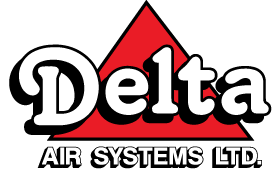With the frigid winter flurries comes a whole new set of household chores, like shovelling and salting, but when they’re all done, you want to be sure the home you return to is nice and warm. The last thing you need after a heavy snowstorm is your furnace to fail, but did you know that snowstorms themselves could actually be the culprit?
It’s not uncommon for furnaces to fail after a heavy snowfall without any prior warning that there may be an issue. It is possible that your unit spontaneously failed, but it’s far more likely that a snowstorm is the reason your furnace has shut off. A large portion of winter furnace failures are due to the exterior intake and exhaust pipes becoming blocked or clogged by snow.
Most furnaces, especially high-efficiency units, have pipes that run to the outside of your home to exhaust and intake air. Although they’re usually located at least a foot off the ground, it’s not uncommon for snow to pile up in front of them and create a blockage. If your furnace senses that it cannot expel or draw in air, it will shut off in an attempt to avoid any damage that could be caused by a lack of airflow. So, this winter, before you call your service technician in a panic, take a deep breath, and follow these steps.
- Locate your intake and exhaust manifolds if you don’t already know where they are. If you’re unsure of what to look for, keep your eye out for two PVC pipes jutting out of your home’s exterior. In most cases, they are one to two feet off the ground, and they are often located near your air conditioner unit.
- Now that you’ve found them, break out your gloves and boots and sport your favourite toque; because it’s digging time. Brush the snow away from the pipes so you can see where they are, that way you won’t accidentally hit them with your shovel. Once you have a clear view of the exhaust and intake, shovel all the snow within a four-foot radius away from them. After you’ve cleared the area, look inside the pipes to make sure the snowstorm didn’t lodge snow and ice within the pipes that could continue to impede your furnace.
- Once the area around your intake and exhaust is clear, and any obstructions are removed from the pipes, your furnace should begin to run on its own again. Depending on the model, you may need to physically start it yourself. So, if it doesn’t start up on its own, just follow the start-up instructions in the manual.
If you’ve followed these steps and your furnace still won’t start up,
contact the experts at Delta for heating service or furnace replacement.
Delta Air Systems Ltd. has been serving the HVAC needs of the Kitchener-Waterloo, Cambridge, and Guelph regions for over 65 years. Our certified technicians are to help you, no matter the season, with reliable service and dependable equipment.
Follow us on Facebook, Twitter, and Instagram
for more tips and to stay up to date with our latest promotions.



